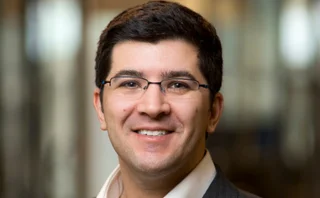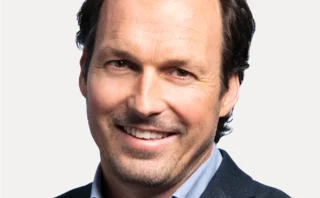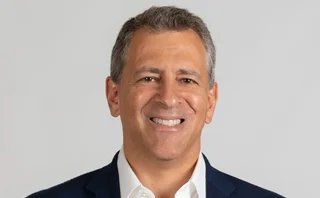
Newcomer of the year: Onyx Capital Group
Energy Risk Awards 2020: Onyx moves from start-up to top liquidity provider and launches hedging advisory in just four years

A willingness to make markets in esoteric energy derivatives, an understanding of market psychology and a ‘keep it simple’ approach to corporate hedging have made Onyx a big name in the energy derivatives markets.
The firm was launched just four years ago by its two co-founders, alongside four graduates across two trading desks, and has risen to become one of the largest providers of energy derivatives liquidity in the world, offering prices in opaque and little-traded parts of the energy derivatives complex. In 2019, it added advisory and hedging services to its offering, creating Onyx Capital Group as the umbrella company for the market-making and advisory businesses.
Greg Newman and Omar Kayaam met at trading company Mandara Capital, where they had been recruited right out of college and cut their teeth trading crude and light distillate derivatives, respectively. “We could see that the [energy] swaps and exchange-traded market was growing strongly … and felt we could take the business model further,” says Newman.
The pullback of investment banks from market-making coincided with growth in the number of exchange-traded energy derivatives – which an insurgent firm such as Onyx could trade without needing credit lines from banks. By making markets in these niche products and using sophisticated risk modelling to minimise its exposures, Onyx has built a huge-volume business across the barrel. It is now a top market-maker by volume in crude, distillates and fuel oil, and trades around 30–35% of the daily cleared swaps volumes in ‘light-end’ products, such as gasoline and naphtha.
“Once you’ve got those volumes, there’s a lot you can do with it”, in terms of leveraging the information and expertise, Newman says. In particular, an understanding of the extent to which energy markets are moved as much by sentiment and momentum among financial traders than by physical supply and demand is an important source of advantage in the market.
The information generated by Onyx’s traders helped seed the firm’s advisory business, which provides research and advice based on “derivatives flow dynamics rather than [just] the underlying physical … We’ve had a lot of success with that.” As a recent example, he points to the recovery in the oil price after the market rout in April, where long positions taken by physical traders along the forward curve provided advance warning of the market’s recovery.
Onyx has fared well throughout the [Covid-19] pandemic so far, says Newman. “The profit and loss volatility is really low. We’re not in the directional trade – we’re providing a service to the market.”
Indeed, he adds that volatile markets can make life easier for his traders. “When you get into more volatility, [counterparties are] actually quite grateful for someone being there to get their requirements done… The volatility does the work for us because it eliminates a lot of negotiation and a lot of fuss.”
We could see that the [energy] swaps and exchange-traded market was growing strongly…and felt we could take the business model further
Greg Newman, Onyx
For all the sophistication of complex trading models, Newman maintains that most of the skill in market-making lies with the trader. “We have pricing sheets… which are a tool for framing our thinking, but really 80% of it is down to the trader’s own understanding of where the market is… The real skill is in evaluating the market as a whole.”
The future of Onyx’s business is looking good, says Newman, because of growing volumes in the swaps market. “Swap volumes are increasing, I think because more people are turning to swaps for greater granularity in their hedges…Where they used to trade futures, they now trade swaps.” That is creating a virtuous circle, in that growing capacity and liquidity in the swaps market is likely to attract more traders.

He gives liquid petroleum gas as an example of a market that Onyx recently opened up. “It grows because people see it trade [and want to] get involved. There’s still a lot of room for new markets to be made, and for new people to either move volumes from futures to swaps, or to start hedging when they weren’t hedging before because there was no reliable instrument to do so… There is no sign of that slowing,” he says.
On the other side of the business, Onyx Advisory takes a ‘back to basics’ approach to hedging. “Our approach is, let’s just streamline it… Hedging is not overly complicated. It’s a question of understanding your commercial contracts, exactly what you’re sourcing, and finding the best product that will as closely mimic the physical you’re buying,” he says. “That’s the beauty of the swaps market – it can so much more accurately reflect the underlying.”
Newman is already eyeing expansion into other commodity markets, with natural gas and power likely to be next on the list, but with metals and agricultural commodities not far behind. “I think we’ll get to a point in the next two years, where there really isn’t [an energy] product in the world that isn’t hedgeable,” he says.
Only users who have a paid subscription or are part of a corporate subscription are able to print or copy content.
To access these options, along with all other subscription benefits, please contact info@risk.net or view our subscription options here: http://subscriptions.risk.net/subscribe
You are currently unable to print this content. Please contact info@risk.net to find out more.
You are currently unable to copy this content. Please contact info@risk.net to find out more.
Copyright Infopro Digital Limited. All rights reserved.
As outlined in our terms and conditions, https://www.infopro-digital.com/terms-and-conditions/subscriptions/ (point 2.4), printing is limited to a single copy.
If you would like to purchase additional rights please email info@risk.net
Copyright Infopro Digital Limited. All rights reserved.
You may share this content using our article tools. As outlined in our terms and conditions, https://www.infopro-digital.com/terms-and-conditions/subscriptions/ (clause 2.4), an Authorised User may only make one copy of the materials for their own personal use. You must also comply with the restrictions in clause 2.5.
If you would like to purchase additional rights please email info@risk.net
More on Commodities
Energy Risk Asia Awards 2025: The winners
Winning firms showcase the value of prudent risk management amid challenging market conditions
Data and analytics firm of the year: LSEG Data & Analytics
Energy Risk Awards 2025: Firm’s vast datasets and unique analytics deliver actionable insights into energy transition trends
OTC trading platform of the year: AEGIS Markets
Energy Risk Awards 2025: Hedging platform enhances offering to support traders and dealers in unpredictable times
Electricity house of the year: Natixis CIB
Energy Risk Awards 2025: Bank launches raft of innovative deals across entire electricity supply chain
Voluntary carbon markets house of the year: SCB Environmental Markets
Energy Risk Awards 2025: Environmental specialist amplifies its commitment to the VCM
Sustainable fuels house of the year: Anew Climate
Energy Risk awards 2025: Environmental firm guides clients through regulatory flux
Weather house of the year: Parameter Climate
Energy Risk Awards 2025: Advisory firm takes unique approach to scale weather derivatives markets
Hedging advisory firm of the year: AEGIS Hedging
Energy Risk Awards 2025: Advisory firm’s advanced tech offers clients enhanced clarity in volatile times








